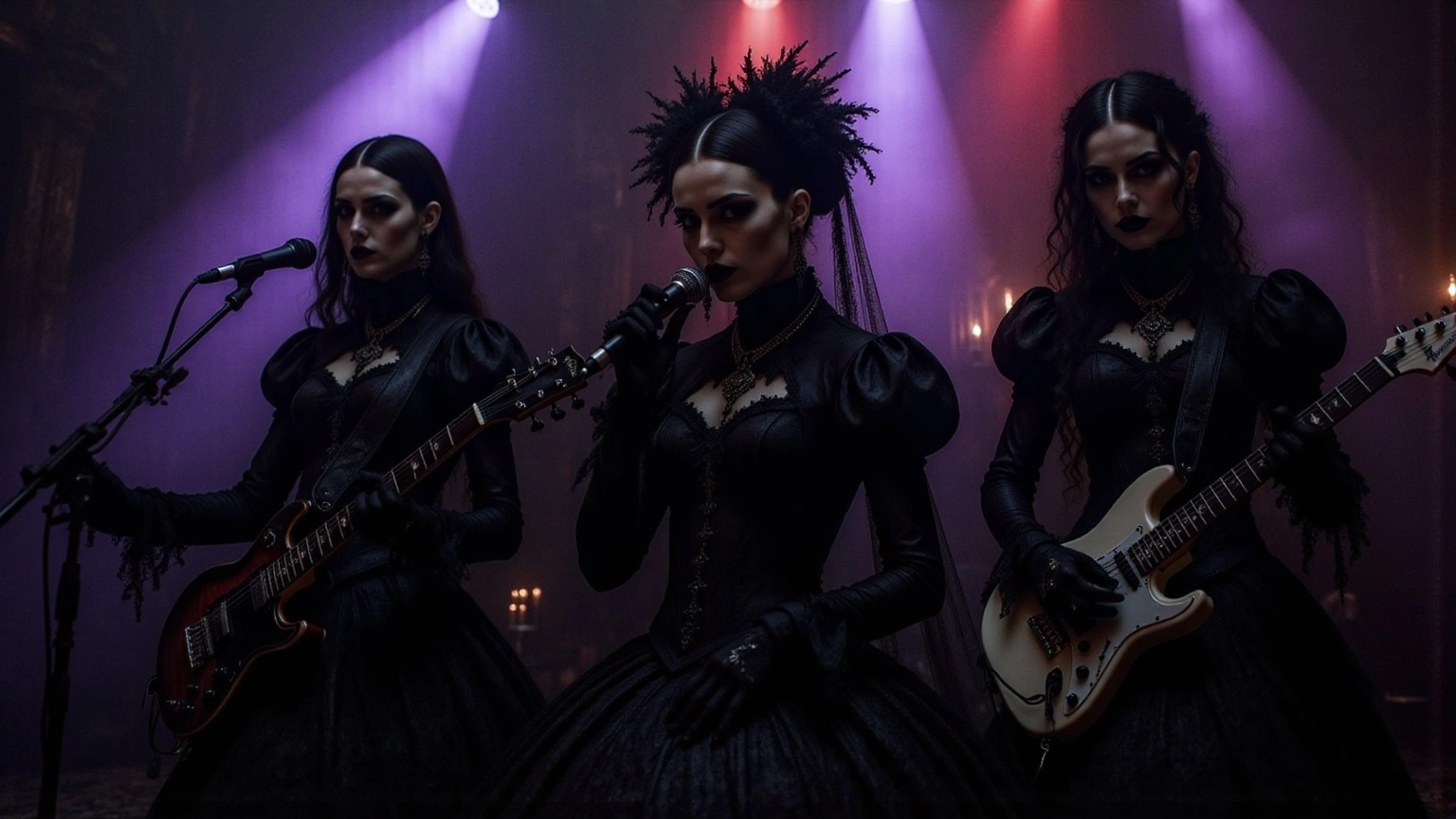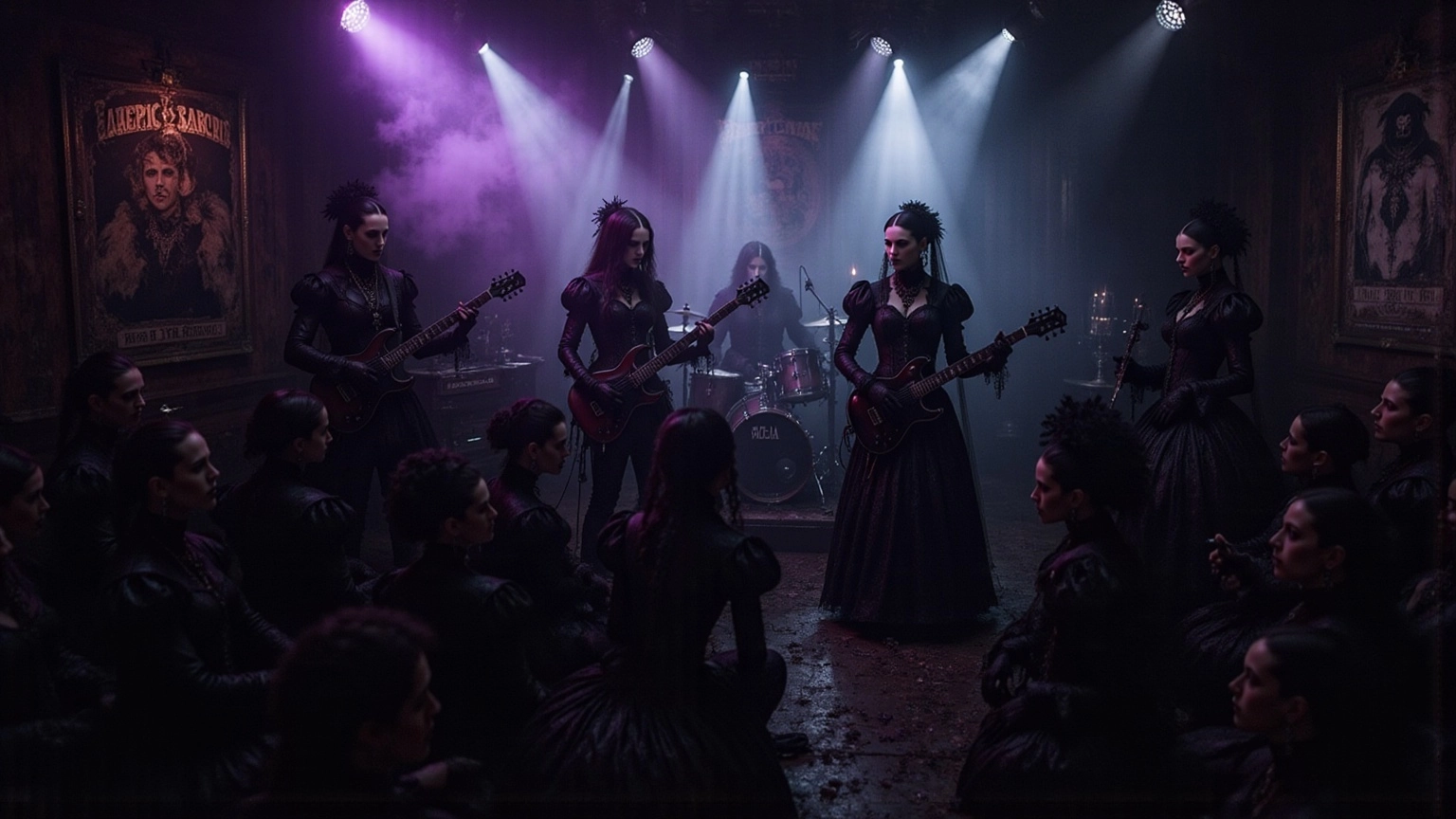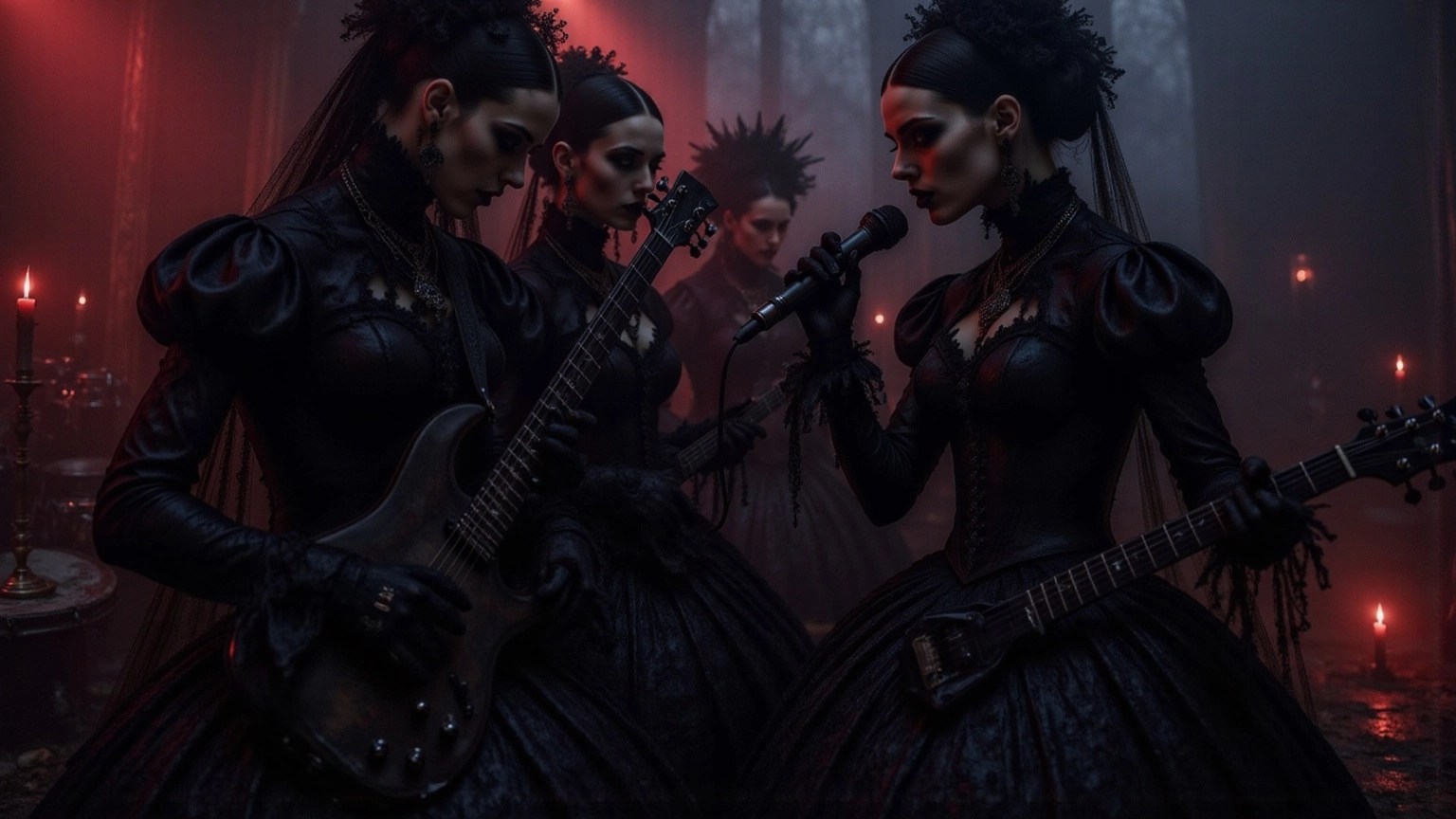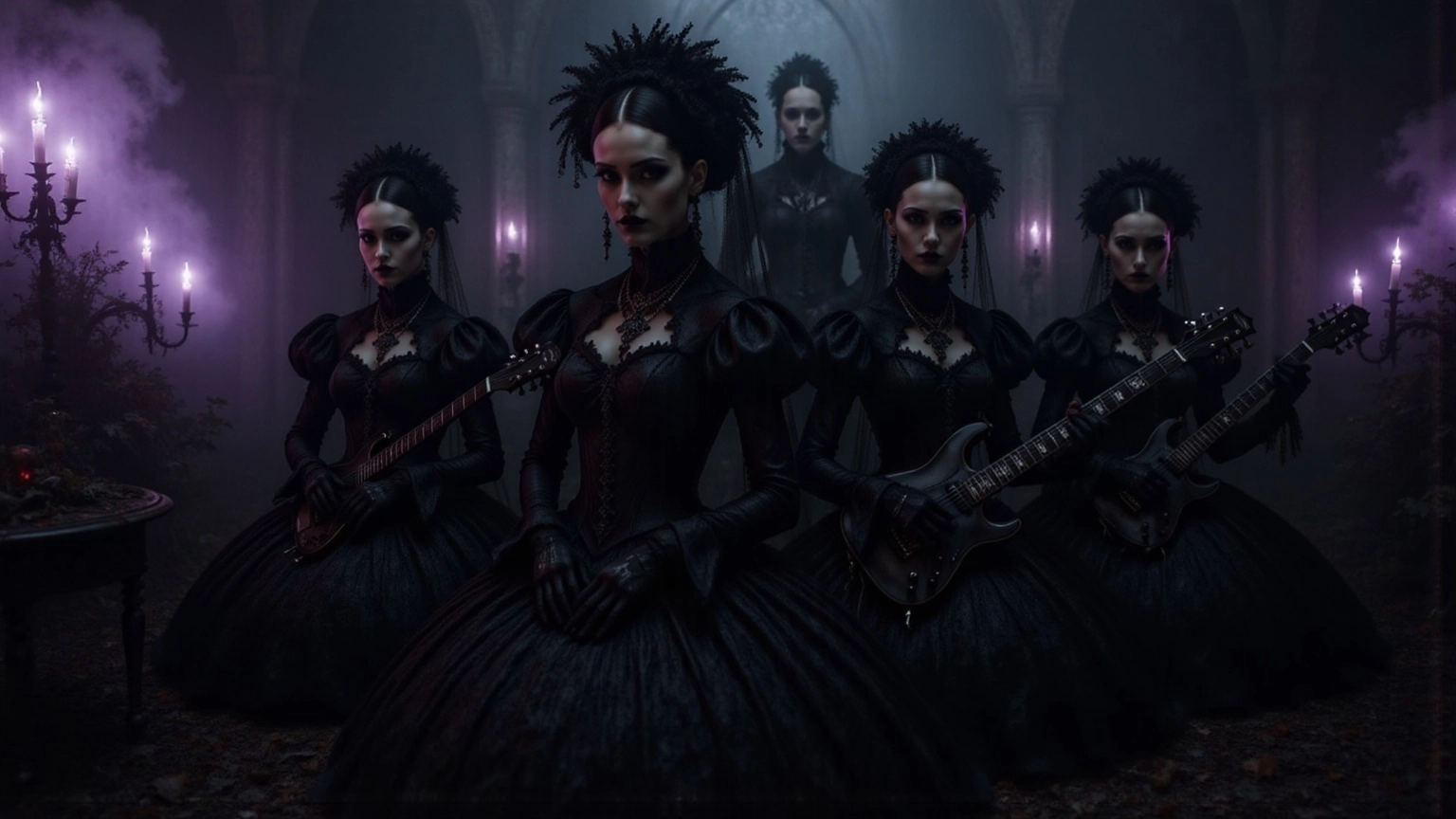
Understanding Gothic Rock Bands: Origins, Characteristics, and Impact
Share
Overview
Gothic rock bands emerged from the shadows of the UK post-punk scene in the late 1970s, defined by their dark sound and introspective lyrics. This genre isn't just music; it's a cultural force that seeps into fashion and art, leaving an indelible mark. What is it about this haunting aesthetic that captivates the soul? Bands like Bauhaus and Siouxsie and the Banshees didn't just play notes; they sculpted the very identity of the goth subculture, crafting an atmosphere thick with allure and mystery.
This article peels back the layers, revealing the evolution, key characteristics, and the profound influence these trailblazers wielded. Dive in—explore the depths of a culture that thrives in darkness, where every note resonates with the pulse of the night.
Introduction
From the shadows of the late 1970s UK post-punk scene, gothic rock bands emerged, crafting a sound that melds dark atmospheres with introspective themes. This genre didn’t just shake the music world; it ignited a vibrant subculture, where striking fashion meets profound self-expression. As modern artists draw from these pioneers, one must ask: how do the haunting melodies and lyrical explorations of gothic rock continue to mold contemporary music and culture?
Defining Gothic Rock Bands: Origins and Significance
Gothic rock bands, or goth music, emerge from the shadows of the late 1970s UK post-punk scene. It’s defined by a dark, atmospheric sound and introspective lyrics, where bands delve into existentialism, death, and the supernatural. Consider gothic rock bands such as Bauhaus, famous for their haunting anthem 'Bela Lugosi’s Dead', along with Siouxsie and the Banshees, and Joy Division, whose 'Closer' pulses with eerie minor chords. These trailblazers didn’t just create music; they sculpted the very identity and aesthetic of gothic rock bands.
But gothic rock bands aren’t just about sound; they represent a cultural phenomenon. It has seeped into the goth subculture, influencing fashion, literature, and art. The darker themes found in gothic rock bands resonate deeply, allowing followers to express themselves through striking styles—dark clothing, dramatic makeup. Critics note that the goth subculture is a canvas for self-expression, a way for individuals to explore their identities through sound and visuals.
As we edge closer to 2025, the legacy of gothic rock bands thrives in the realm of dark music. New bands draw inspiration from its core elements while pushing boundaries. Gothic rock bands are a vital thread in the fabric of cultural expression, celebrated for their artistic creativity and ability to confront life’s complexities. The influence of gothic rock bands lingers in modern sounds, where artists pay homage to tradition, ensuring that the impact on music and subculture remains profound. Albums like 'Heaven or Las Vegas' by Cocteau Twins and 'Monolith' by Twin Tribes echo the enduring significance of dark music in today’s scene. What will you discover in this haunting soundscape?

Historical Context: The Evolution of Gothic Rock
The roots of dark music? They dig deep into the late 1970s, a pivotal time when punk began to fade. Artists, hungry for darker themes and sounds, tapped into the raw energy of punk and the experimental edge of post-punk. This electrifying fusion birthed haunting melodies, deep bass lines, and atmospheric instrumentation, laying the groundwork for a new musical style.
By the early 1980s, gothic rock bands surged in popularity, influenced by the goth subculture, which was defined by its striking fashion—dark clothing and dramatic makeup. This era didn’t just bolster alternative music as a defiant force; it forged a cultural identity for those yearning to express their uniqueness and embrace the darker shades of life.
Punk rock’s influence was undeniable. Bands like Bauhaus, with their groundbreaking 'Bela Lugosi's Dead' in 1979, helped define the sound of gothic rock bands by blending post-punk vibes with a taste for the macabre. And here’s a twist: a study involving 1,258 young individuals revealed that the goth subculture thrives on nonviolence and acceptance, highlighting the supportive community woven into the genre’s fabric.
Critics like Barry Walters note that dark tunes dive into profound emotional depths, amplifying the cultural significance of this style. The gothic aesthetic? It’s not just a relic of the past; it continues to pulse through contemporary music, with modern gothic rock bands drawing from the rich legacy of their predecessors, ensuring that gothic styles remain not just relevant, but ever-evolving.

Key Characteristics of Gothic Rock Bands: Sound, Themes, and Aesthetics
Gothic music—it's not just sound; it's an experience, a haunting echo of shadows. Picture this: minor keys intertwining with reverb-laden guitars, deep, resonant vocals that wrap around you like a dark embrace. Think of the bass lines that pulse through your veins and keyboards that create an atmosphere thick enough to cut. This isn't mere listening; it’s an immersion that captures the soul.
Lyrically, gothic rock bands explore themes of melancholy, existential dread, and the supernatural, often drawing inspiration from literature and film. It’s a world where every word drips with meaning, where every note beckons you closer. And visually? Oh, it’s a feast for the eyes—dark, romantic clothing that screams theatricality, crafting a distinctive aesthetic that resonates with those who dare to explore life’s shadows.
Consider the reflective lyrics of Bauhaus; their 1979 single 'Bela Lugosi's Dead' stands as a monumental moment in this genre, a haunting anthem that reverberates through time. And then there's The Cure, with ethereal soundscapes that linger in the air, especially in 'Seventeen Seconds' and 'Faith.' These gothic rock bands didn’t just create music; they forged a legacy that inspires countless performers and cements the style's significance in the annals of music history.
So, are you ready to delve into this rich tapestry of sound and vision? Gothic music isn’t just a genre; it’s a cultural expression that invites you into a community that embraces the darker facets of existence. Explore it, feel it—let it resonate within you.

Influential Gothic Rock Bands: Pioneers and Their Impact
Bauhaus stands as a pillar of dark music, having carved the genre's identity with their groundbreaking track 'Bela Lugosi's Dead,' unleashed in 1979. This song morphed into an anthem for the goth subculture, setting the stage for the haunting, atmospheric sound that defines the genre's rock. Music critic Reynolds declared it 'the quintessential goth anthem of the year.'
Siouxsie and the Banshees surged the style's allure, weaving punk energy with dark aesthetics through their innovative soundscapes and theatrical performances. Their albums, especially 'Juju,' illuminated a unique fusion of haunting melodies and lyrical depth that captivated audiences. Siouxsie Sioux herself noted, 'Many goth bands have imitated, but they simply ended up diluting it,' a testament to their originality.
The Cure, with their melancholic melodies and introspective lyrics, broadened the genre's horizon with albums like 'Disintegration,' delving into love, loss, and existential angst. Robert Smith, the band's enigmatic frontman, captured the essence of the dark aesthetic: 'There’s a look and a kind of a vibe and an atmosphere.'
Collectively, these gothic rock bands not only shaped their contemporaries but also forged a solid foundation for future artists in the gothic and alternative music realms, ensuring that gothic rock remains a vital, evolving force in music history. The rise of new sub-genres like Cyber Goth and Goth pop, propelled by social media, showcases the genre's adaptability and enduring relevance in today's culture.

Conclusion
Gothic rock bands have etched their mark on the music landscape, rising from the ashes of the late 1970s post-punk scene to ignite a powerful cultural movement. With an atmospheric sound, introspective lyrics, and striking aesthetics, these bands didn’t just create a genre; they birthed a subculture that champions self-expression and dives into the shadows of existence.
Tracing the evolution of gothic rock, we witness its roots in punk and its explosive rise during the 1980s. Iconic bands like Bauhaus, Siouxsie and the Banshees, and The Cure emerge as titans, their music steeped in themes of melancholy, existential dread, and the supernatural. Their influence extends beyond the stage, shaping contemporary artists and the broader cultural landscape, ensuring the gothic rock legacy continues to pulse through time.
What makes gothic rock endure? It’s the connection it forges with audiences on a deeply emotional level, providing a sanctuary for exploration and expression. As the genre morphs, it beckons new generations to engage with its rich tapestry of sound and aesthetic, reminding us of music's power to articulate the complexities of the human experience. Embracing the haunting beauty of gothic rock enriches personal identity and cultivates a community that thrives on creativity and acceptance.
Frequently Asked Questions
What are gothic rock bands and when did they emerge?
Gothic rock bands, also known as goth music, emerged from the late 1970s UK post-punk scene. They are characterized by a dark, atmospheric sound and introspective lyrics that often explore themes of existentialism, death, and the supernatural.
Can you name some influential gothic rock bands?
Influential gothic rock bands include Bauhaus, known for their anthem "Bela Lugosi’s Dead," Siouxsie and the Banshees, and Joy Division, whose song "Closer" features eerie minor chords.
What cultural significance do gothic rock bands hold?
Gothic rock bands represent a cultural phenomenon that has influenced the goth subculture, impacting fashion, literature, and art. They allow followers to express themselves through striking styles, such as dark clothing and dramatic makeup.
How do gothic rock bands contribute to self-expression?
The darker themes in gothic rock music resonate with individuals, providing a canvas for self-expression and a means to explore identities through sound and visuals.
What is the current state of gothic rock music as we approach 2025?
As we approach 2025, the legacy of gothic rock bands continues to thrive, with new bands drawing inspiration from its core elements while pushing boundaries in dark music.
How do modern artists pay homage to gothic rock?
Modern artists pay homage to gothic rock by incorporating its elements into their music, ensuring that the influence of gothic rock bands remains significant in today’s music scene.
Can you mention some contemporary albums that reflect the influence of gothic rock?
Contemporary albums that reflect the influence of gothic rock include "Heaven or Las Vegas" by Cocteau Twins and "Monolith" by Twin Tribes, which echo the enduring significance of dark music.
